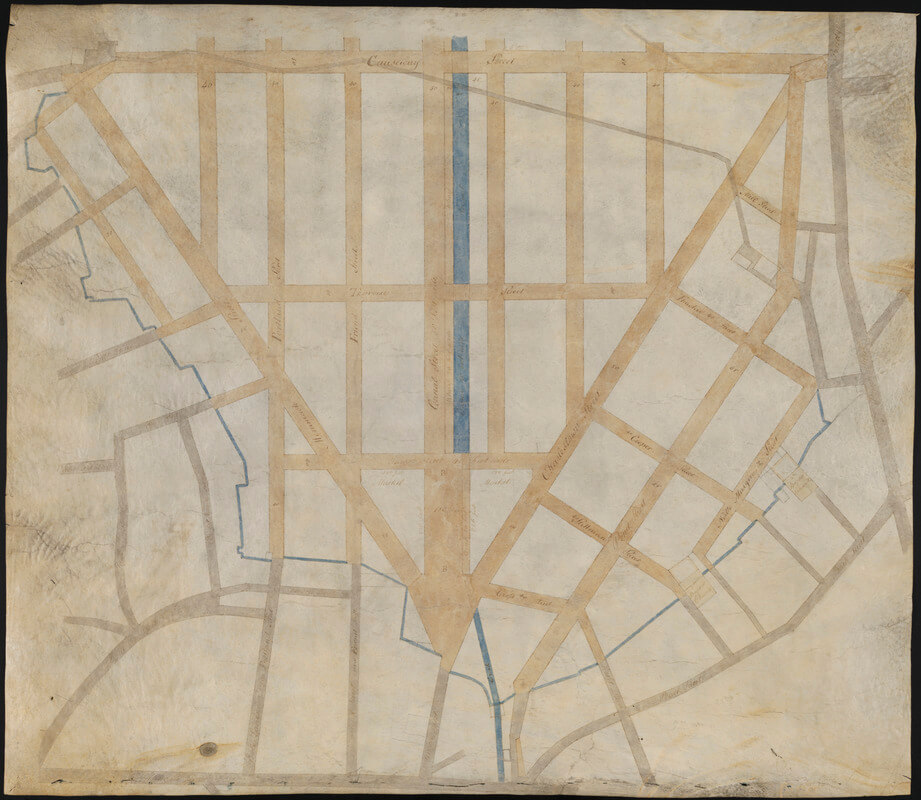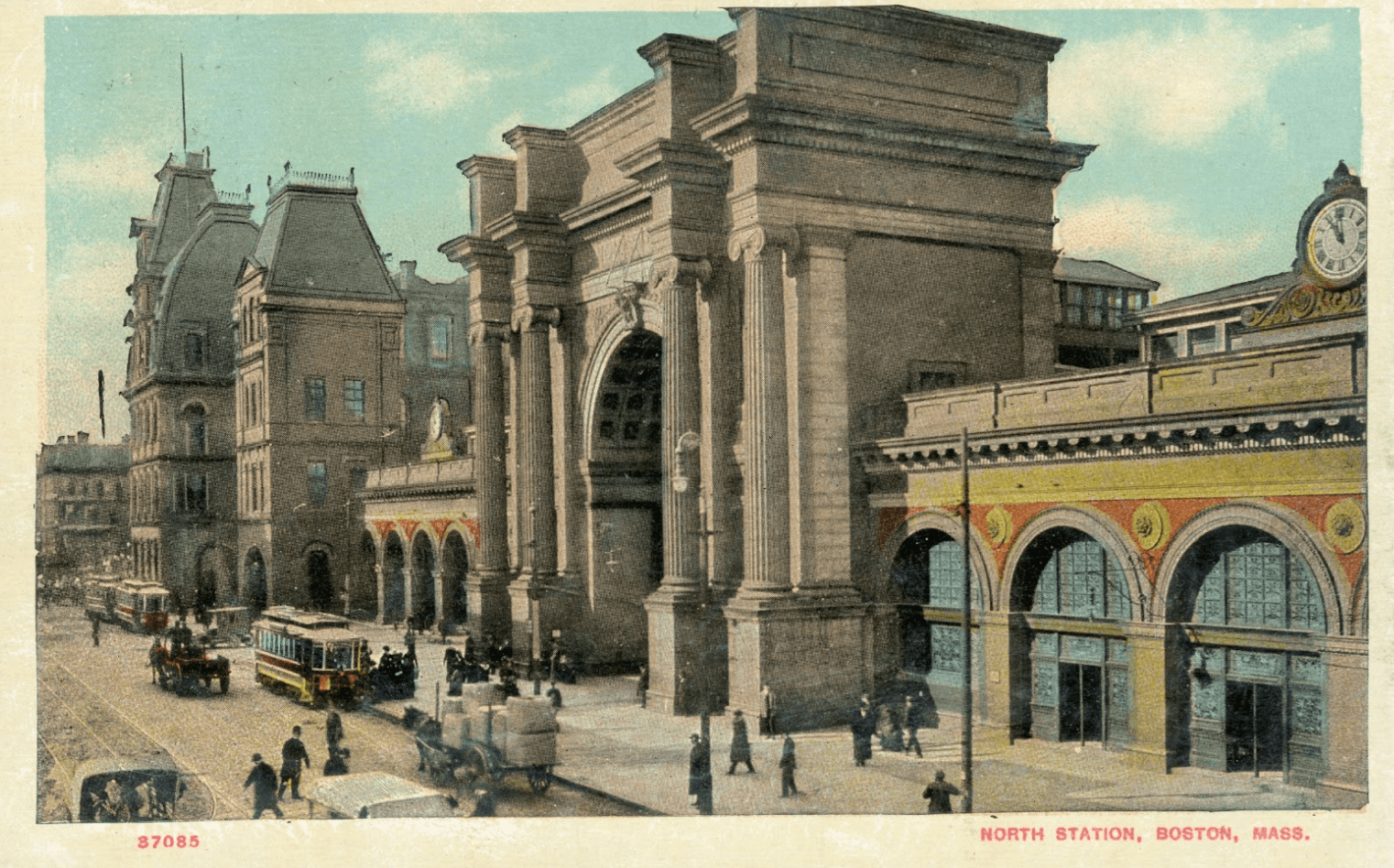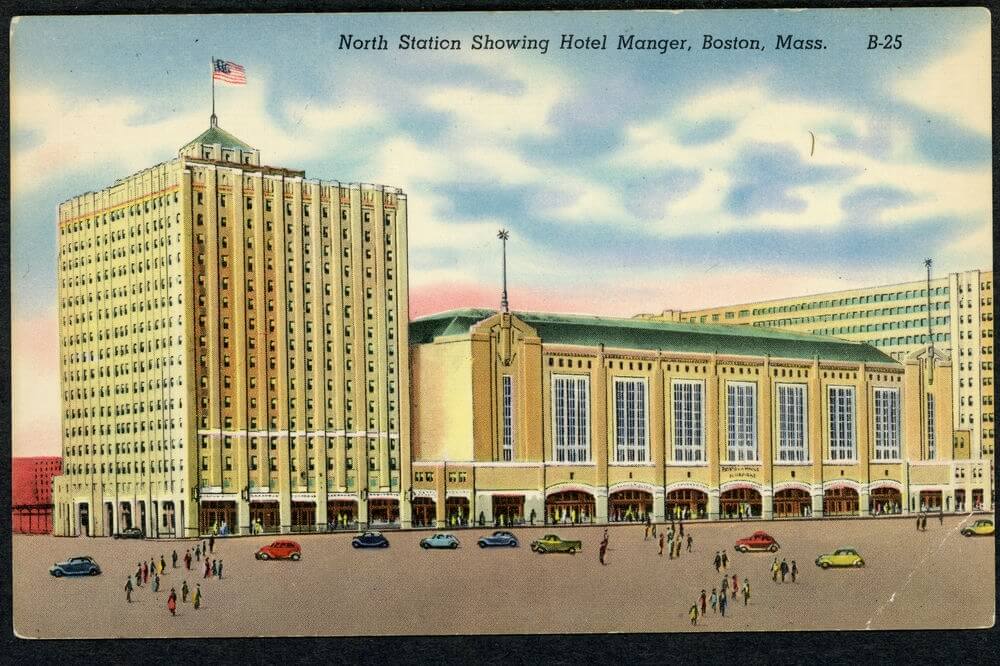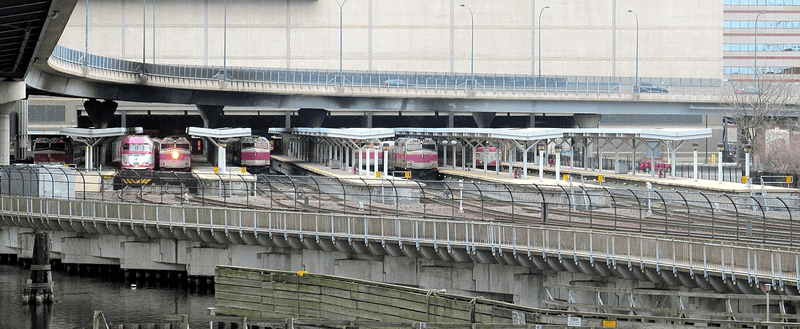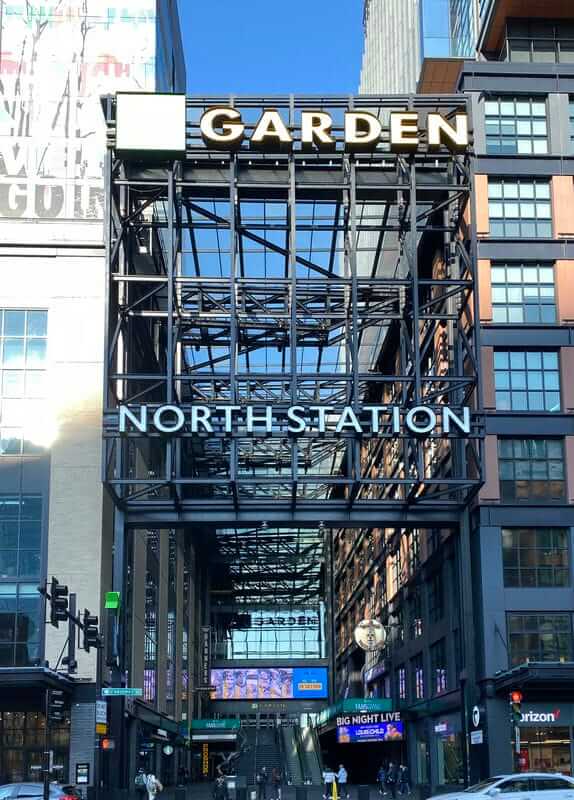The Many Faces of North Station
For tens of thousands of daily commuters, North Station is a final destination to work and a starting point for home. For many others, it is a stop along the way to somewhere else. But few of today’s commuters know that over the past two centuries, there have actually been several train stations in the West End– built in grand style – that predated the North Station we know today.
Boston was one of young America’s principal cities and ports, yet its physical growth had always been constrained by its location on the Shawmut peninsula. In the early 19th century, architect Charles Bulfinch proposed addressing the problem by filling in the marshes around Boston to accommodate new urban development. His first such project, what would later become known as the Bulfinch triangle, was a grid of new streets arranged on the former Mill Pond in today’s West End neighborhood. By the second half of the 19th century, all railroads connecting Boston to points north and west of the city crossed the Charles River, and four of these eight railroads erected depots in the Bulfinch Triangle
In 1835 the Boston and Lowell (B&L) Railroad chose Lowell Street as the location for its depot. It was later joined on the same street by stations of the Eastern and Fitchburg Railroads which built their stations on Causeway. To stand out from the others, each chose a unique architectural style―French Second Empire, Italianate, and Gothic Revival, for its depot. Unlike its competitors, the Boston and Maine Railroad (B&M) constructed its depot a few blocks south on Haymarket Square. Despite enjoying some distance from its competitors, the owners of the B&M were still interested in style, choosing a Greek Revival design for its structure. The B&M depot displayed two-story pilasters with elaborate capitals supporting a large pediment in whose center was a clock—an all-important element for travelers trying to make a scheduled departure.
Over the next forty years, the B&M became the predominant railway company in the Northeast. Through a calculated campaign of acquisition and consolidation starting in 1842, it the gained charters in New Hampshire and Maine, and later purchased 47 competing regional short lines. By 1887 the B&M had sole control of the Boston-Portland route and access into Vermont and Quebec through lease agreements with the Eastern and the B&L railroads. Seeing a need to unite its services under one roof, the B&M began construction of a new North Union Station in 1893, just south of the current North Station structure. Replacing the former depots on Causeway Street, the North Union Station’s façade would feature an 80-foot-high granite triumphal arch flanked by four massive columns, and its eastern side was formed by a five-story baggage and express building. North Union Station was opened in stages from 1893 to 1894, and by the time it was fully completed, the station had become popularly known as “North Station.”
The first North Station stood for only three decades before it was torn down in 1927 in favor of a larger depot that included a new arena―Boston Garden―above the ground-floor waiting room and concourse. This innovative plan was based on New York City’s Madison Square Garden, and in keeping with the trends of the time was designed in the popular Art Deco style. The new station would have an imposing neoclassical design whose façade was dominated by a large triumphal arch that represented the railroad’s power. It also featured a round arch with a coffered ceiling roughly two stories high, flanked on each side by two columns with Ionic capitals that sat upon bases of rusticated stone. Arcaded wings six-bays across spread out from the central arch and their centers supported large clock faces. Beyond the arcades were the waiting rooms that received ample light from bands of clerestory windows. The concourse was similarly brightened by large skylights to dispel the notion that train sheds of the era had to be dark and smoky. The new North Station and Boston Garden opened in 1928.
For the next fifty years, the second North Station would go through many alterations. In 1985 it received replacement trestles, new tracks, and platforms after a fire in 1984. In 1989, the MBTA paid $13.7 to raise the five commuter rail platforms for accessibility, and in 1990 an underground garage and platform were added. Finally, in 1993, the state reached a deal to replace the aging Boston Garden. In exchange for the land and easements to construct the new Fleet Center, the developer constructed a train shed and waiting area on the ground floor and a subway tunnel under the arena to replace the subway lines above Causeway Street. The result was a combined underground “superstation,” allowing for pedestrian access to North Station. The third North Station and the new Fleet Center opened in 1995.
Two new expansions took place in 2006; the station’s waiting area was enlarged and the number of tracks expanded to 12. This $5 million project, completed in 2007, added 20,000 square feet of waiting and retail space. Along the way, the name of the arena above the station changed several times, ultimately becoming TD Garden. In 2019, North Station got a new entrance and a tunnel connecting Amtrak–commuter rail services. This ended the disjointed journey of commuters who had to go outside when transferring between the subway and the commuter rail or Amtrak. That same year, thanks to Amtrak’s service to Maine, North Station became the 24th busiest Amtrak station in the country, and the sixth busiest in New England.
Over the years, North Station – and the West End – has been the focal point of rail travel between Boston and points west and north. The station’s continued importance can be seen in the most recent development projects surrounding it that have added more modern living and office spaces, entertainment venues, and dining and drinking establishments to an increasingly vibrant neighborhood.
Article by Susan Gilbert, edited by Bob Potenza
Sources:Barrett, Dick. Boston’s Depots and Terminals: A History of Boston’s Downtown and Back Bay Railroad Stations from 1834 to Today. Railroad Research Publications, 1996; Karr, Ronald Dale. Lost Railroads of New England. 3rd ed., Branch Line Press, 2010.; www.archiseek.com; www.greatamericanstations.com;


